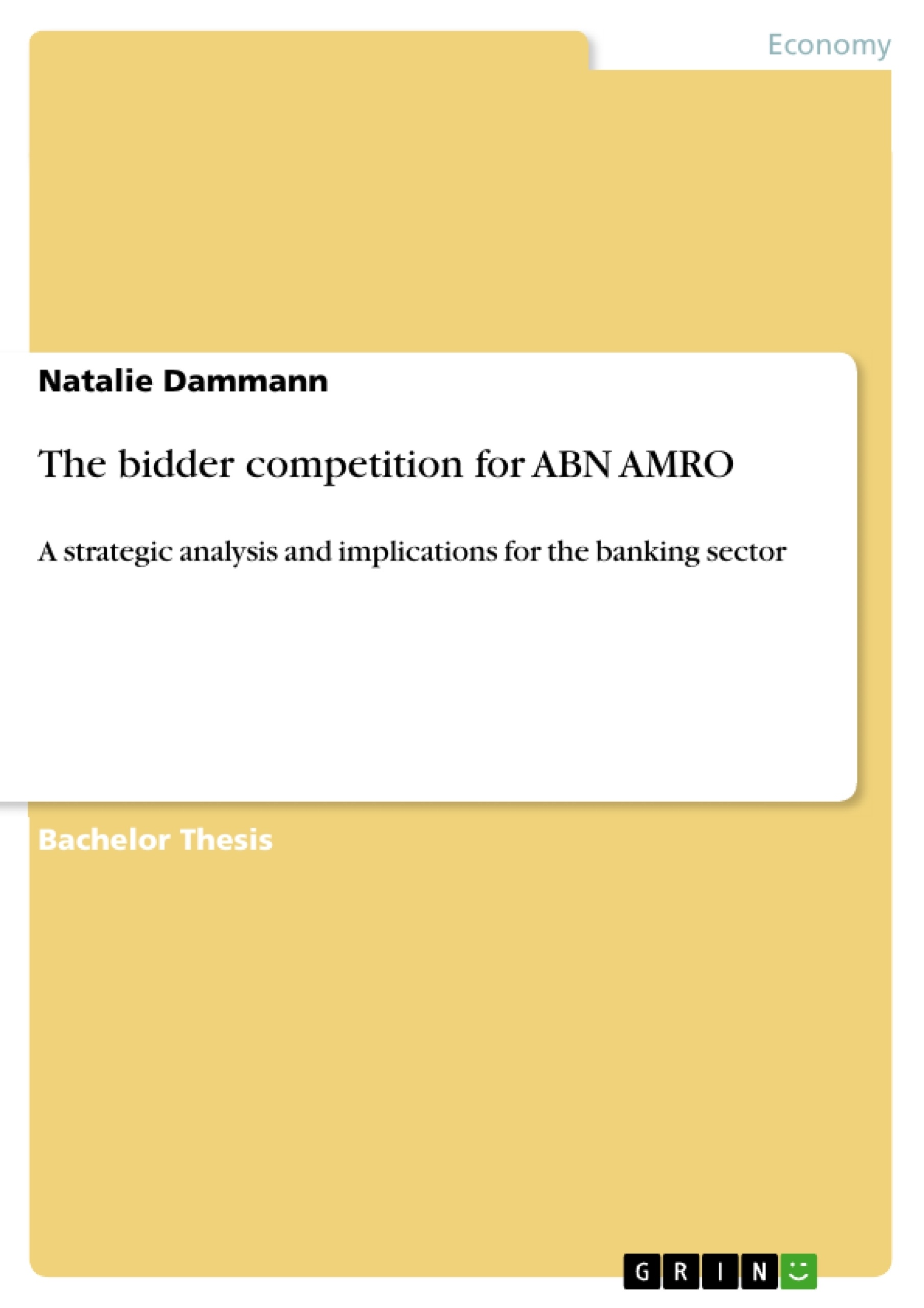As the global economic environment changes the banking sector, banks are positioning themselves in order to compete against one another. Although some banks focus on a particular market niche, the most salient feature of competitive posturing has been a trend toward the consolidation and rapid development of large big banks. The banking sector has experienced rapid consolidation globally, which, to some extent, reflects the general mergers and acquisitions (M&A) activity in the global economy. Mergers and acquisitions in the banking sector appear in the headlines frequently. A recent example is ABN AMRO Holding N.V. (ABN AMRO). This banking group always assumed that it would be on the attacking end of a takeover bid, rather than the receiving end.
However, on 23 April 2007 ABN AMRO received a EUR 65.7 billion bid from Britain’s Barclays PLC (Barclays), in what could be the biggest banking merger ever. Then two days later an even bigger potential offer came in from a European consortium led by the Royal Bank of Scotland (RBS), which aimed to dismember ABN. This offer verged on hostility, setting the stage for what emerged to be the longest and most bruising take-over battle in the banking sector’s history.
Table of Contents
- Introduction
- Problem Definitions and Objectives
- Course of the Investigation
- Global Banking Sector - Theoretical Foundations
- Historical Development
- Definition of a Bank
- Risks Faced by Banks
- Liquidity Risk
- Credit Risk
- Market Risk
- Operational Risk
- Types of Banking Services
- Retail Banking
- Private Banking
- Investment Banking
- Sector Consolidation
- Case Study: The Bidder Competition for ABN AMRO
- Situation pre-Takeover of ABN AMRO
- Company Overview and Business Description
- Strategic Focus
- Key Financial Data
- Competitive Environment
- SWOT Analysis
- Strengths
- Weaknesses
- Opportunities
- Threats
- The Bidder Competition
- Involved Parties
- Barclays
- The Royal Bank of Scotland Consortium
- Legal Framework
- Course of the Bidder Competition
- The First Phase - Exclusive Talks and First Bid
- The Second Phase - Legal Deadlock and Rival Bid
- The Third Phase - Revised Bids
- The Fourth Phase - Barclays Withdraws From Bidding
- Situation post-Takeover of ABN AMRO
- Positive Consequences
- Negative Consequences
- Reflections of the ABN AMRO Takeover's Effects on the Banking Sector
- Developments in Banking M&A Activity
- Europe
- United States of America
- East Asia
- The Causes of Consolidation
- Value-Maximising Motives
- Non-Value-Maximising Motives
- The Role of Shareholders
- The Role of Managers
- The Role of Government
- Effects of Consolidation
- Efficiency
- Competition
- Risk
- Small Business Lending
- New Challenges for the Banking Sector
- Bank Regulation and Risk Management
- Financial Stability
- Outlook
- Conclusion and Implications for Further Research
Objectives and Key Themes
This thesis examines the background and implications of mergers and acquisitions in the banking sector. It aims to provide a systematic overview of the reasons behind banking sector consolidation by relating theoretical insights to evidence of the bidder competition for ABN AMRO. This analysis also aims to shed light on the extent to which consolidation can be viewed as a driver of competition and efficiency, and to highlight the key implications of consolidation for the future of the banking sector.
- The role of mergers and acquisitions in driving banking sector consolidation.
- The motivations behind banking sector consolidation, encompassing both value-maximizing and non-value-maximizing factors.
- The effects of consolidation on efficiency, competition, and risk in the banking sector.
- The emergence of new challenges for the banking sector in the wake of consolidation, including regulatory issues and financial stability concerns.
- The implications of consolidation for the future of the banking sector and potential areas for further research.
Chapter Summaries
The thesis begins with an introduction that sets out the problem definition and objectives of the research. The following chapter delves into the theoretical foundations of the global banking sector, exploring its historical development, definition, risks faced by banks, types of banking services, and the phenomenon of sector consolidation. This chapter lays the groundwork for understanding the context of the case study that follows.
The third chapter presents a detailed case study of the bidder competition for ABN AMRO. It analyzes the company's pre-takeover situation, focusing on its business description, strategic focus, financial data, competitive environment, and SWOT analysis. The chapter then examines the bidder competition itself, detailing the involved parties (Barclays and the Royal Bank of Scotland consortium), the legal framework, and the course of the competition, including each phase of the bidding process. Finally, the chapter discusses the situation post-takeover of ABN AMRO, highlighting both the positive and negative consequences.
The fourth chapter provides a comprehensive analysis of the effects of the ABN AMRO takeover on the banking sector. This chapter examines developments in banking M&A activity across Europe, the United States, and East Asia, as well as the underlying causes of consolidation, including value-maximizing motives and non-value-maximizing motives. The chapter then explores the effects of consolidation on efficiency, competition, risk, and small business lending.
Keywords
The central focus of this thesis is the analysis of banking sector consolidation, particularly the case of the bidder competition for ABN AMRO. Key terms and concepts include mergers and acquisitions, banking sector, consolidation, efficiency, competition, risk, financial stability, regulation, and the global economic environment.
- Citar trabajo
- Natalie Dammann (Autor), 2008, The bidder competition for ABN AMRO, Múnich, GRIN Verlag, https://www.grin.com/document/91908



